Conxa Rodà
Yes and no would be the short answers to the question in the title. Not developed enough and not in the majority of the cultural centres would be a more elaborate answer to the first question. And yes, a content strategy is necessary and useful to bring the goals of the centres into line with the audiences’ needs and expectations, would complement the second answer.
Just about forever, the museums have been creators of content -exhibitions, printed material, events, and more recently, digital content. But since not so long ago, we have started to think about content in a global and strategic way. For me this turns out to be a bit paradoxical. Content is key to connect with the public, for making the collections more accessible, improving the experience, and the quality, of the visit, well…for just about everything that gets us closer to achieving our mission of spreading knowledge and making the museums more social places. So, from this we can deduce that thinking about content in a strategic way is a need, something to which we should dedicate time, effort and resources.
We talked about all of this, learning and discussing, in the seminar-workshop. Content strategy in museums held this week in the museum. Around 50 professionals took part from museums, universities and other centres, with a mixed panel of local and international speakers.
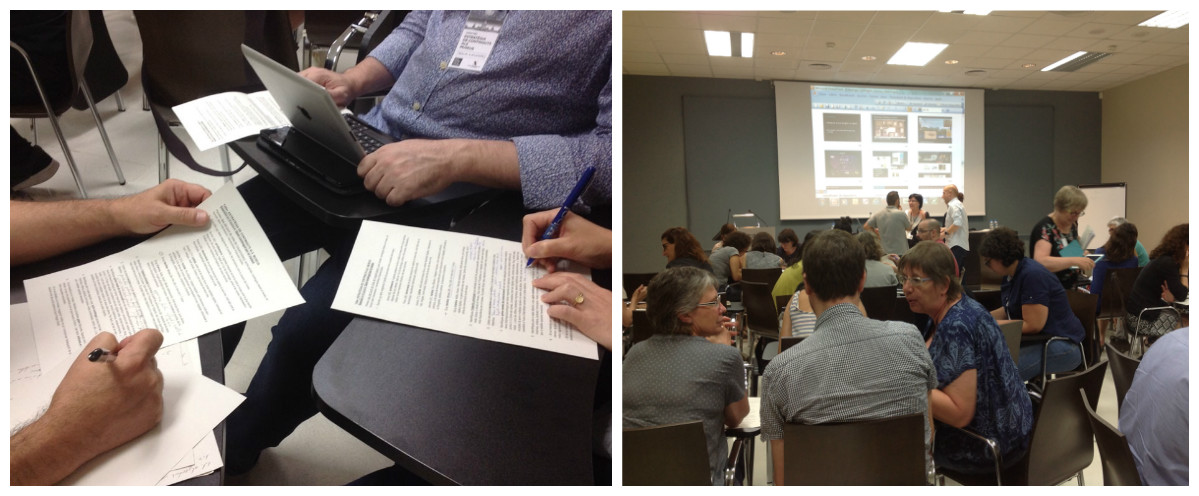
Discussion of a case study. Photos: Sandra Esteban
10 shared views about content in the talks and debates
- The more diversified our presence is in networks and platforms, the more we need a solid integrated content strategy and distributed throughout the museum. Why, what aim are we trying to achieve? For whom, who is our public, what audience do we already have, who do we want to reach? What do we have, our assets, what do we need, what outreach do we plan? And many other questions. Questions that we shouldn’t only try to resolve from just one department, but optimally, it is a team task, of the whole museum.
- The outcome of a Content Strategy is to allow for:
-better content
-better processes of content creation and management - The audiences –visitors, users– have to be at the heart of all strategies. This user-focused approach, is becoming widespread but there is often a lack in terms of putting it sufficiently into practice. It’s necessary to keep changing the point of view towards the users and from the users’ perspective. Any project of content creation –for websites, social media, apps, etc.– should be thought up first with the end-users in mind, assessing which content can be useful and interesting for the public, what the most suitable way of building and spreading it is. The content is for our audiences, not for us. It is fundamental to identify the audiences and carry out research about their needs, expectations, and motivation in terms of consumption of our content according to the place, the moment and the context in which they interact with the museum. A good model of this can be found in the Tate’s research on Website audience segmentation.
- First the content, then the design (and the technology). A balance between content and design is needed. It is key to design on real content, so as to avoid the misfortune of having content that doesn’t fit in with the design. This may result in having to adapt the content or redo the design and even the developing, with the added costs of time and money that this signifies. You can’t imagine how often this happens!
- The importance of curating the content lifecycle: there is work prior to the creation and once we have published. The cycle goes from the idea, the creation, production, publication and as far as the post-publication, that is to say the evaluation, the maintenance, improvement and eventual archiving or elimination.
- Be selective when choosing and prioritising the content. We probably won’t be able to manage everything at the same time, so it’s necessary to choose the content that responds to the main action lines of the museum, what serves users’ needs better, or, being pragmatic, the content we are able to produce. Reusing, making the necessary adaptations, and republishing content is not only sustainable, but it also gives a new life to material that wasn’t maybe spread enough.
- Internal collaboration, an often difficult challenge, but basic for creating better content and in a more sustainable way. Multidisciplinary teams – experts in content, communicators, educators, designers, developers – all help to enrich the contribution, and neutralize eventual difficulties due to some essential aspect being forgotten. Sònia López, of the Macba (Museum of Contemporary Art), mentioned the convenience of a positive “contamination” of the offline-online teams of the museum.
- Clarifying the workflow is crucial to avoid misunderstandings and frustration. So, define who is responsible for what, who does what, in what order, who has editing permission, who gives final approval. It helps to improve efficiency and keep deadlines.
- Creating content requires time, especially if we want to make it relevant and of quality and with all the attributes it requires, beyond being substantial: a good title, carefully and well-written texts, adapted to the media, images and captions, other visual material, keywords, internal and external links. It has been calculated by GatherContent that 12 hours of work are needed for a page of content of 750 words from the idea until publication!
- Measuring what we do so as to gain knowledge and improve: previously define which indicators we will use to evaluate the result, analyse them and reach decisions for improvements. Measuring makes a lot of sense if we act in consequence, if we make improvements in the browsing and surfing, in the usability, creating new content which is lacking, changing our plans. If we only collect data but we don’t do anything to improve the results, we could almost spare us the trouble. Report back to your organisation. Keep them informed of impact, select comments.
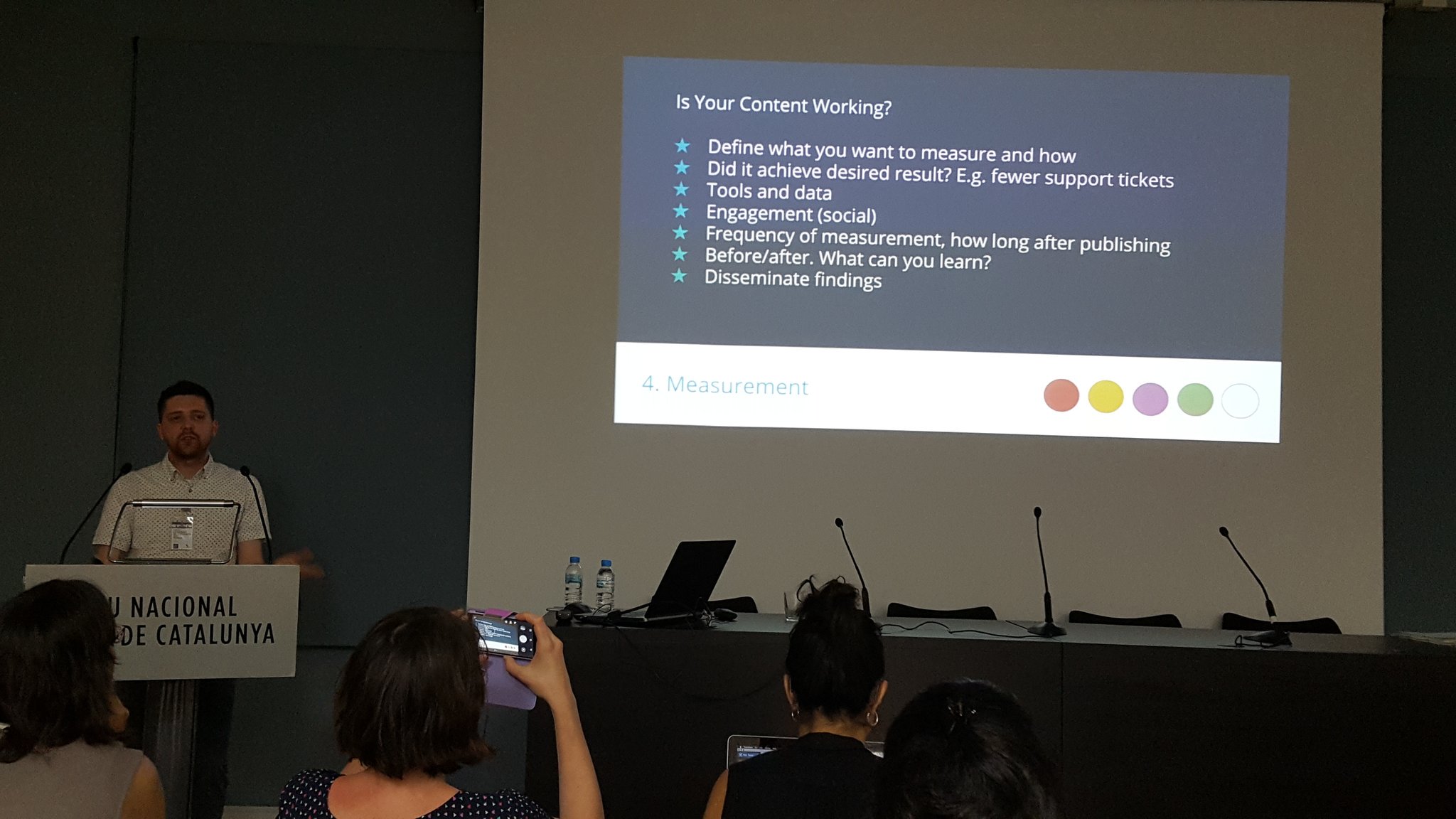
Rob Mills. Photo: Gemma Carrera, UOC
Some gems from each talk
- The technique of “pair writing”, Rob Mills: sit two people down to write a first draft together (client/supplier or within the museum an expert in the matter/communicator)
- Engagement (likes or retweets) doesn’t guarantee that a content works, as we don’t know if the people will read it (Rob Mills).
- A disturbing question to ask ourselves: when performance goes wrong, what do we have to refine content or strategy? (Rob Mills). An interesting dilemma. My opinion is that it is the least costly, in time and effort, to review the content and if the result still continues without improvement, then attack the strategy. Or if things go really badly, it’s necessary to review both.
- Knowing your audience is the tip of the iceberg. Understanding them is another story. (Rob Mills).
- Methods of introducing the perspective of the users when we design a web browser, were highlighted by Mario Pérez-Montoro. Non-participative: analytical software, visitor services, identifying personas. Participative: questionnaires, focus groups, interviews, test of users, eye tracking, card sorting.
- Sometimes the improvements in usability go against habits and what you’ve learnt (Mario Pérez-Montoro).
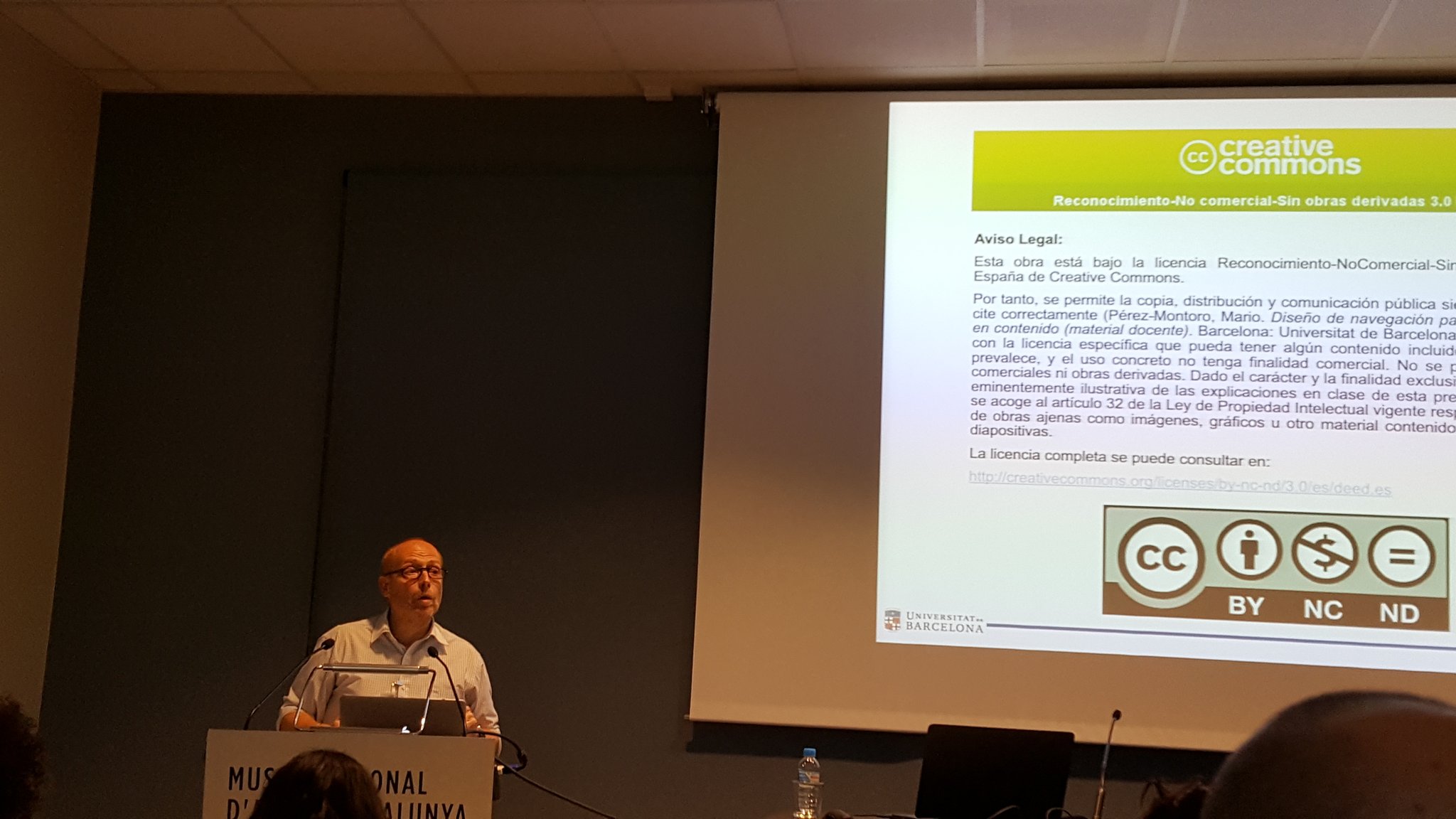
Mario Pérez Montoro’s talk. Photo: Gemma Carrera, UOC
- Paradox: we say that we should listen to audiences but often we don’t listen to each other within the museums (Anna Noëlle).
- Carme Comas also insisted on the importance of internal communication and knowing how to share and collaborate.
- Often the strategy of the intangible -ergo content- becomes subordinate to the tyranny of the results (Sònia López).
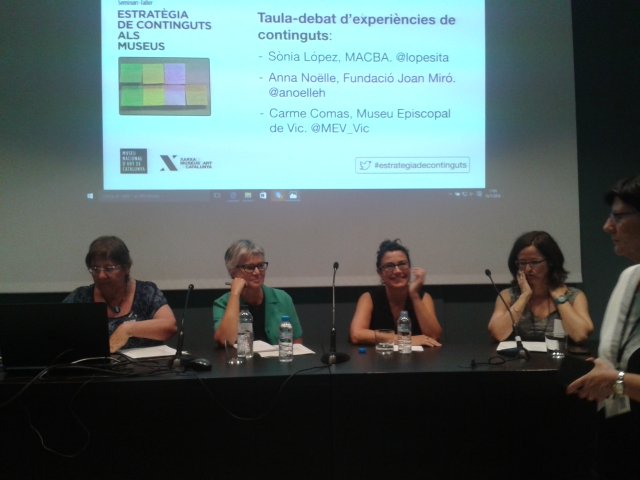
Discussion of content experiences. Photo: Maria Farràs, CCCB
- Resistances that Kristina Halvorson detects from the companies and organisations to adopt a content strategy: “We have too much content”, “We don’t have enough content”, “Our content is inconsistent”, “We create content in silos”, “We have no customer research”, “We have no success metrics”, “We have 12 bad CMSes”, etc. each of these counter-arguments highlight, in fact, a desperate need to establish a strategy!
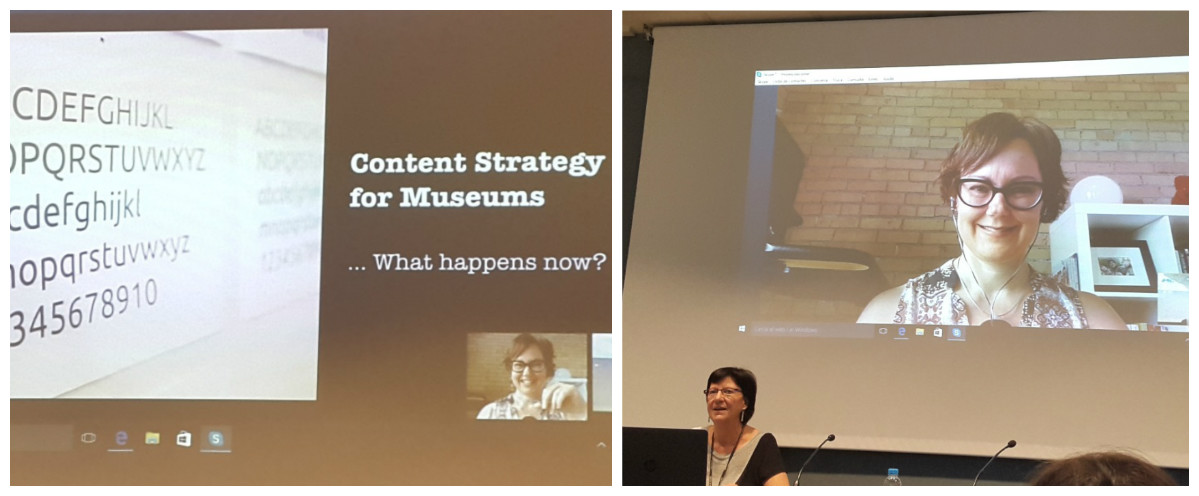
Kristina Halvorson’s talk via Skype. Photos: Marta Peinador
- A strategy means to prioritise (Kristina Halvorson).
- And let me include one of my own: to achieve our mission of being good connectors of collections/knowledge with the public, content is positioning in the first rank to help us connect with people, to make collections more accessible, attract new audiences and improve the experience of the visit.
Museums are fortunate because the collections, the buildings, our history and our daily tasks provide us with infinite stories to tell. We have the necessary ingredients for good content, we just need to know how to “cook” with creativity and imagination and to think about the tastes of the end-users.
Do you want to share how you work on content in your centres? What difficulties do you find? As users, what content do you want to find in museums? We can talk about it in the comments below.
Recommended links
Content Strategy in Museums #ConfabEU, Museu Nacional’s blog
The Discipline of Content Strategy, Kristina Halvorson
Your content process: stop guessing who’s responsible, Rob Mills
Content strategy resources, GatherContent
Co-directora del Curs d'Estratègia Digital_UOC_Museu Nacional d'Art de Catalunya
Co-directora del congrés CIMED de Museos y Estrategias Digitales







